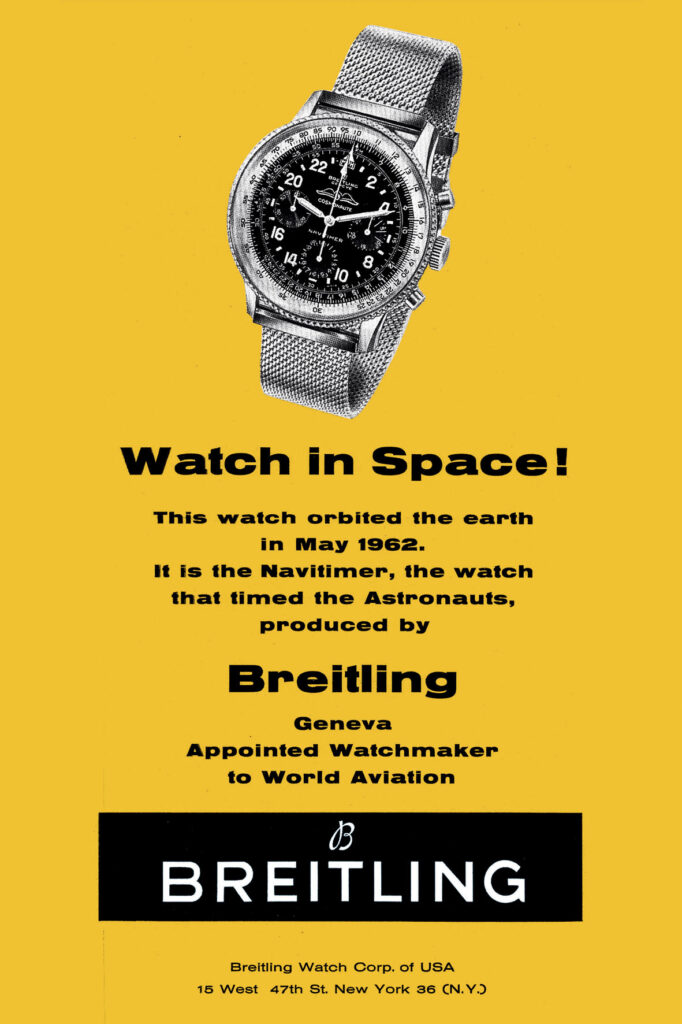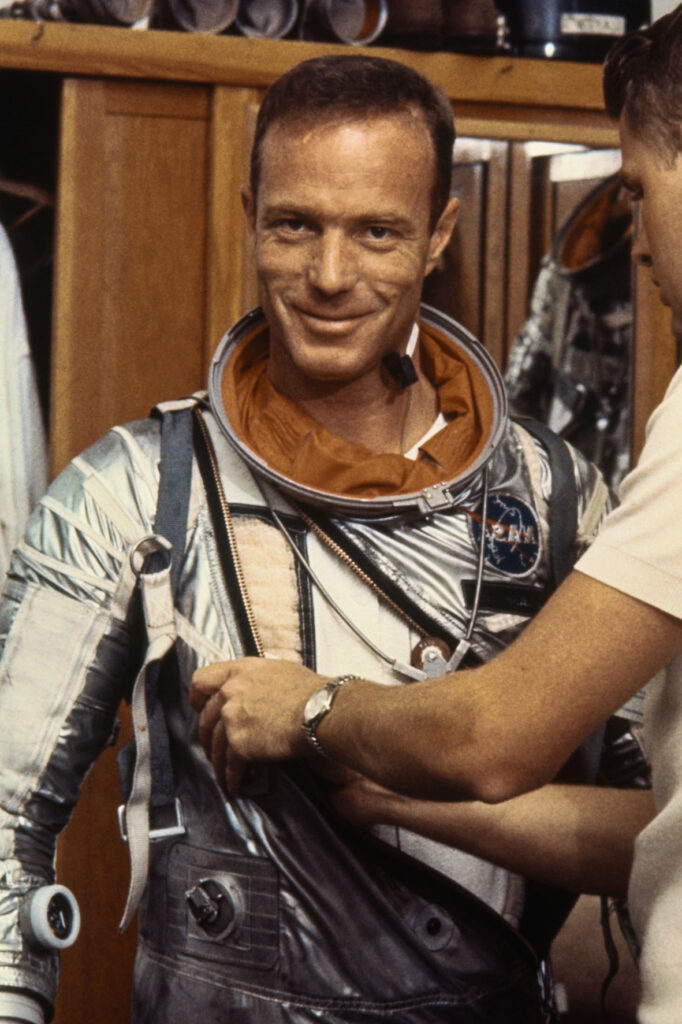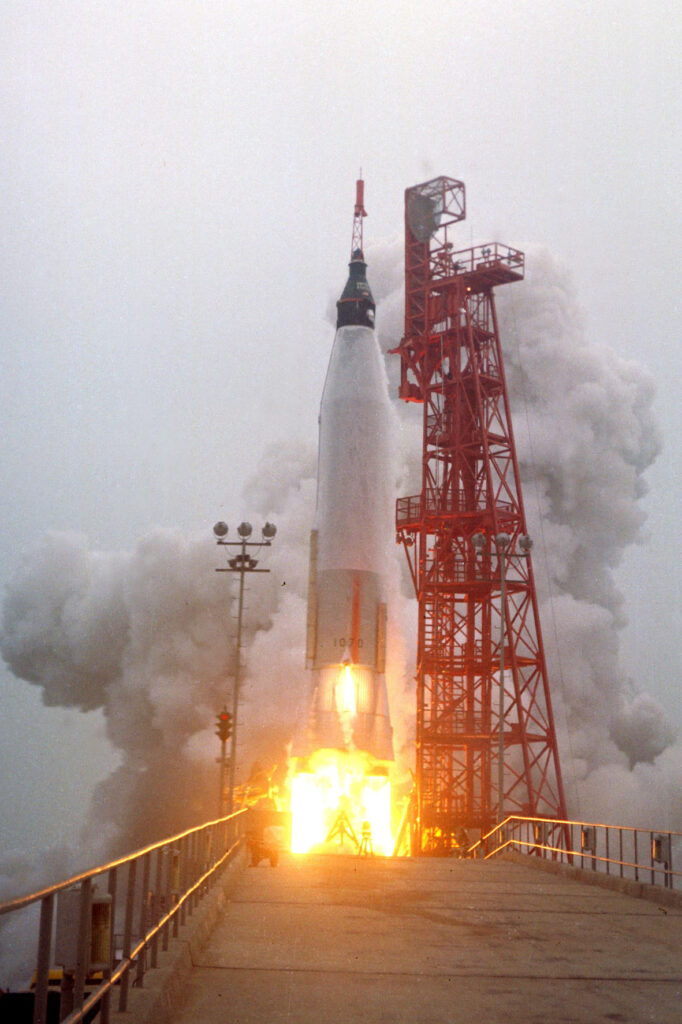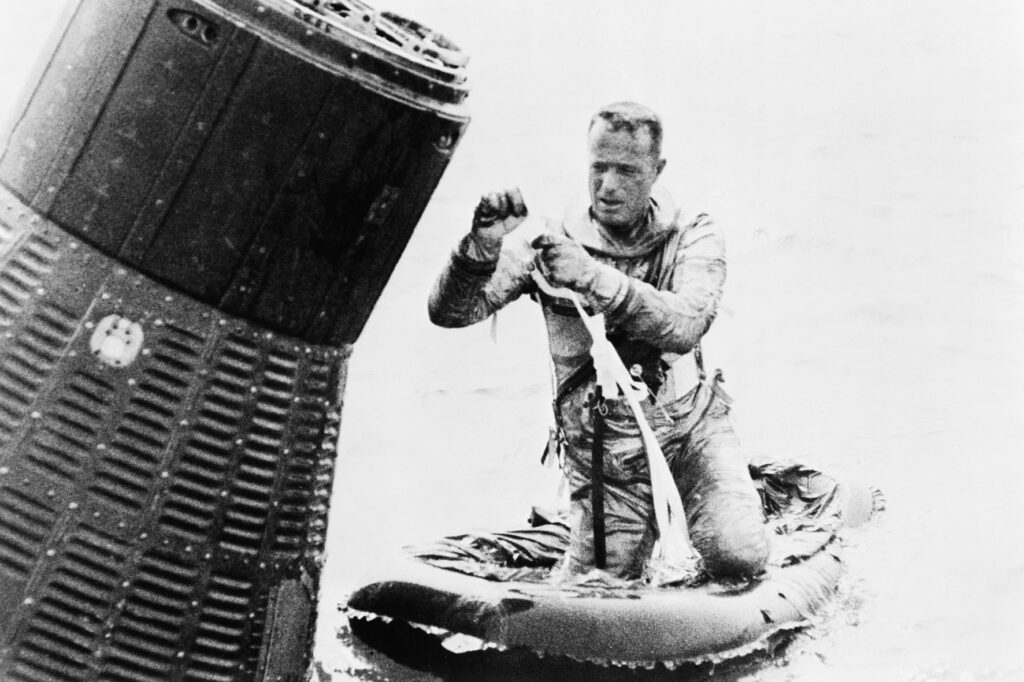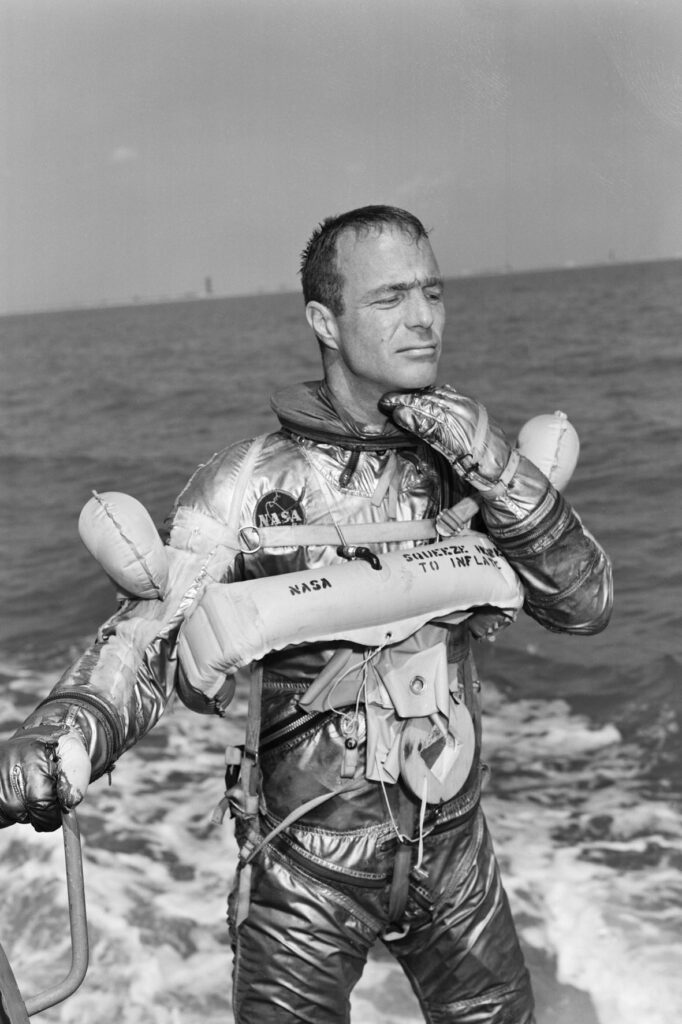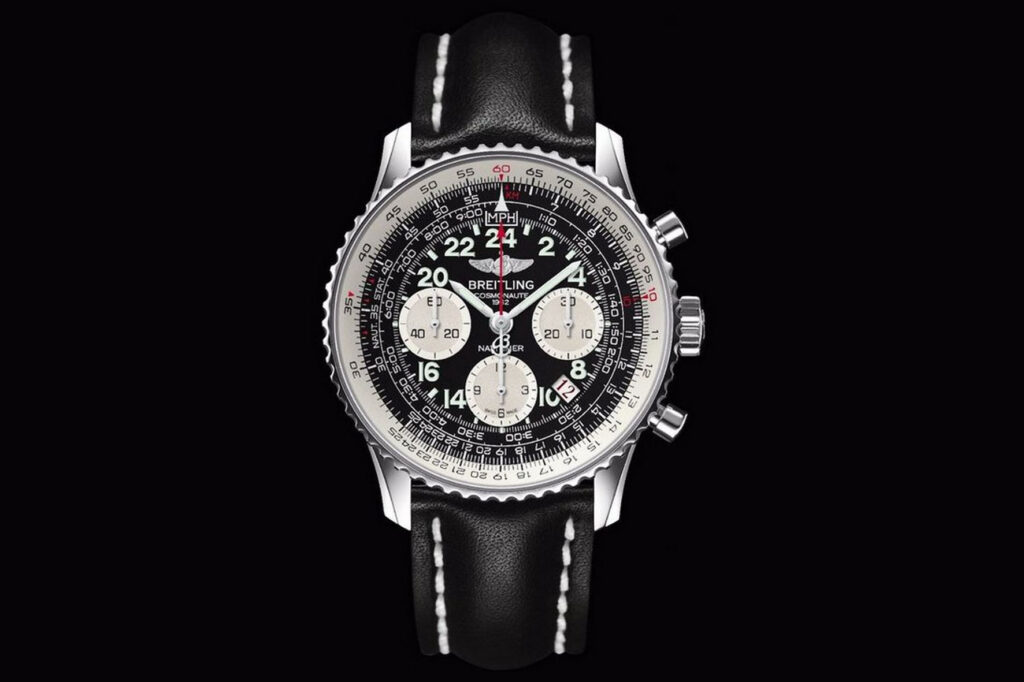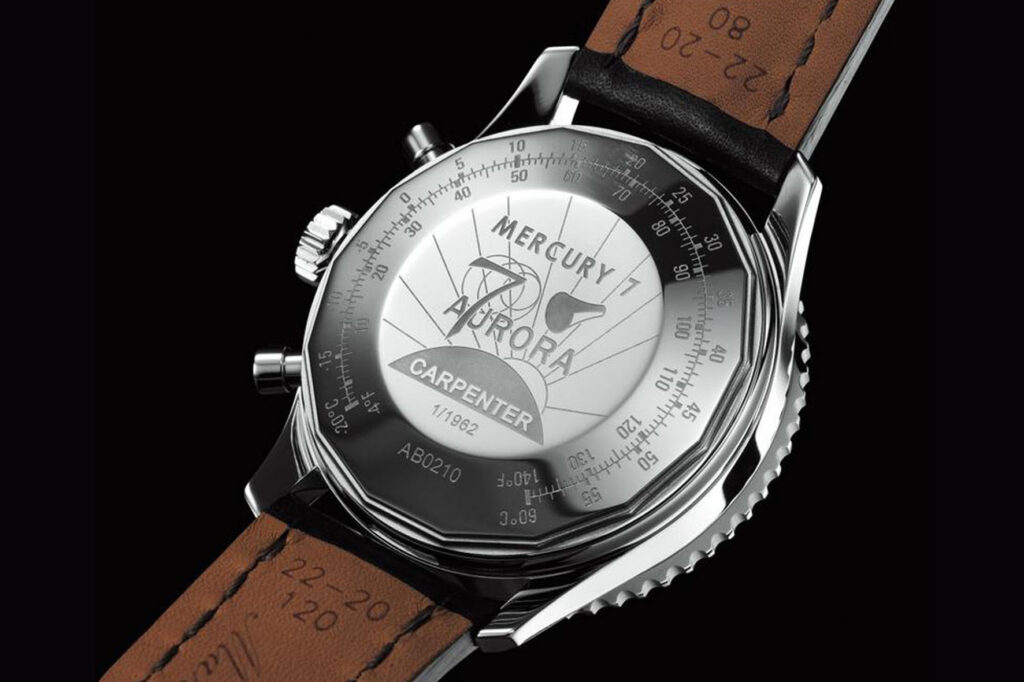Breitling Navitimer Cosmonaute: from space to wrist
24 May 20222022 is definitely the year of the Breitling Navitimer. At the end of March, Georges Kern presented the new references that celebrate the 70th anniversary of the watch – with the reference to the partnership with AOPA – the Aircraft Owners and Pilots Association– the largest aviator club in the world. Now the Bretiling Navitimer Cosmonaute is back.

This watch has a singular story, just like that of the entire Navitimer collection. This watch does not speak of ordinary aviators but of astronauts, and recalls a time when the conquest of space was a political issue rather than a scientific one. A race for which the best instruments were needed, and to which Breitling participated with the Navitimer Cosmonaute.
BREITLING NAVITIMER COSMONAUTE AND THE SPACE RACE
If for the Navitimer 1952 is the key year, for the Navitimer Cosmonaute we have to jump ten years forward. It was 1962 and, by now, the Breitling watch was considered the pilot’s watch par excellence. The space race was in full swing and was a challenging terrain for timepiece brands, which aspired to be the first to be spotted on astronauts’ wrists.
Breitling had an advantage over many competitors, thanks to its experience in the aviation watch industry. An advantage that became evident exactly 60 years ago. On May 24, 1962, the Breitling Navitimer Cosmonaute was on the wrist of American Astronaut Scott Carpenter aboard the Aurora 7 capsule: as part of the Mercury-Atlas 7 mission, Carpenter orbited the Earth three times and his spacecraft landed in the Atlantic Ocean about 5 hours after take-off.
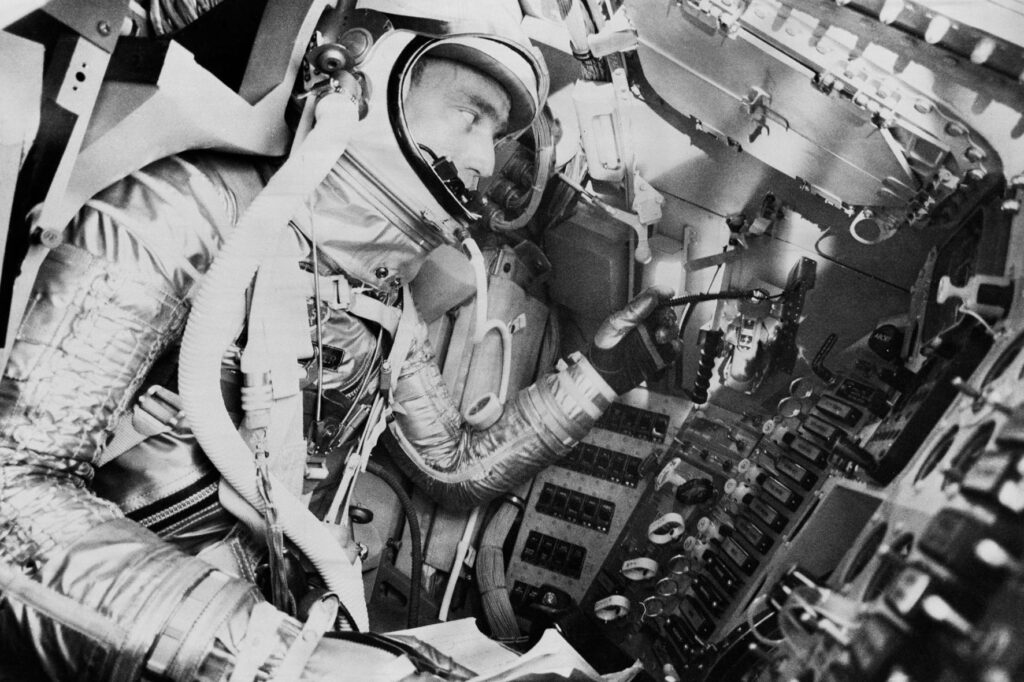
The Navitimer Cosmonaute was Carpenter’s personal request. The astronaut knew the watch well because he used it when he was a pilot in the US Navy; for his space mission he specifically asked for a variation, with the addition of a 24-hour dial to help him distinguish day from night while he was in space.
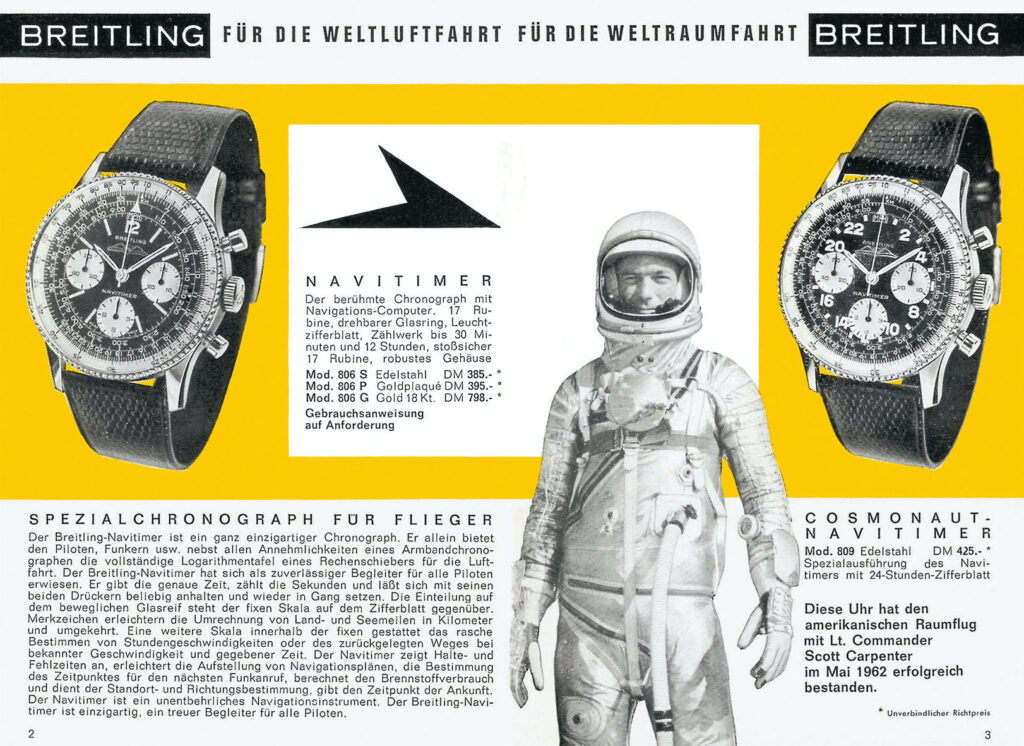
A request that, without Carpenter knowing it, led to the creation of a watch that soon became legendary. Despite the fact that the fate of the first piece was not very lucky. Due to some miscalculations, the Aurora 7 capsule with Carpenter inside landed about 300 km from the recovery ship. The astronaut was thus left at the mercy of the waves for several hours and his Breitling Navitimer Cosmonaute was irremediably damaged by salt water.
Fortunately, although ruined and shabby, that watch was not lost but is kept in the Breitling family collection, while a new one went on Carpenter’s wrist, to consolidate a bond that united the watch to a generation of astronauts. In fact, in the Breitling family collection there is also another Cosmonaute – which belonged to the American astronaut John Glenn – purchased at an auction in 2019 by Gregory Breitling, great-grandson of the founder of the Léon brand . During the American pilot’s first flight into Earth orbit in February 1962, Carpenter was Glenn’s backup, in charge of that mission.
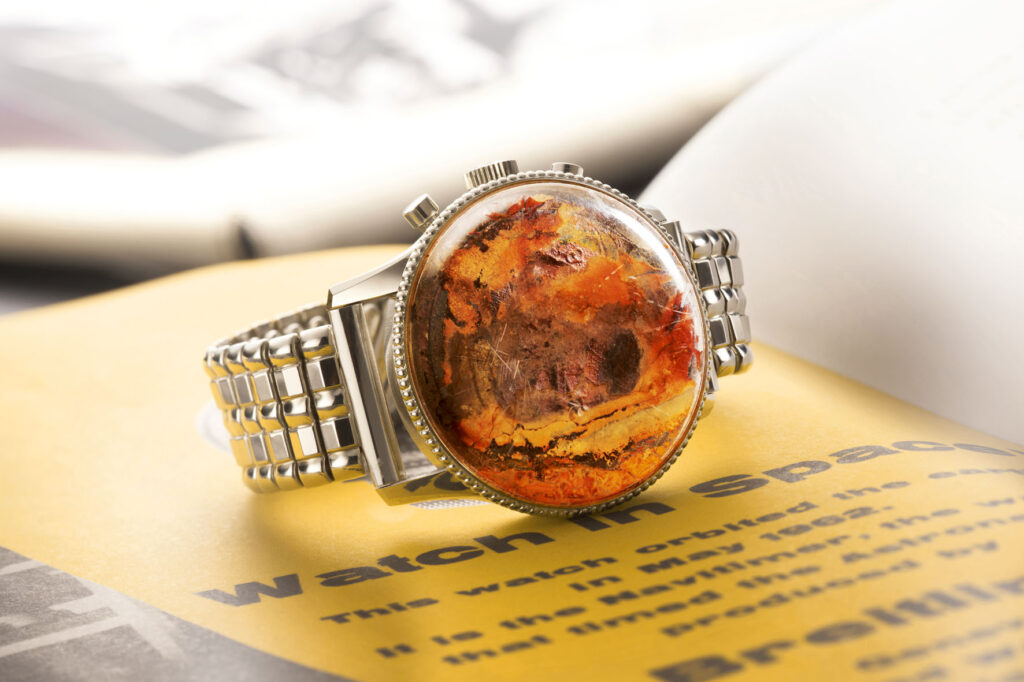
SIXTY YEARS LATER
These intertwined stories were revived by Georges Kern during the launch of the new Breitling Navitimer Cosmonaute, on a date chosen not by chance: May 24, 2022. An event held in Zurich and focused on space, which saw protagonist the watch that originally flew with Carpenter around the Earth, exhibited for the first time to be admired by collectors, journalists and enthusiasts.
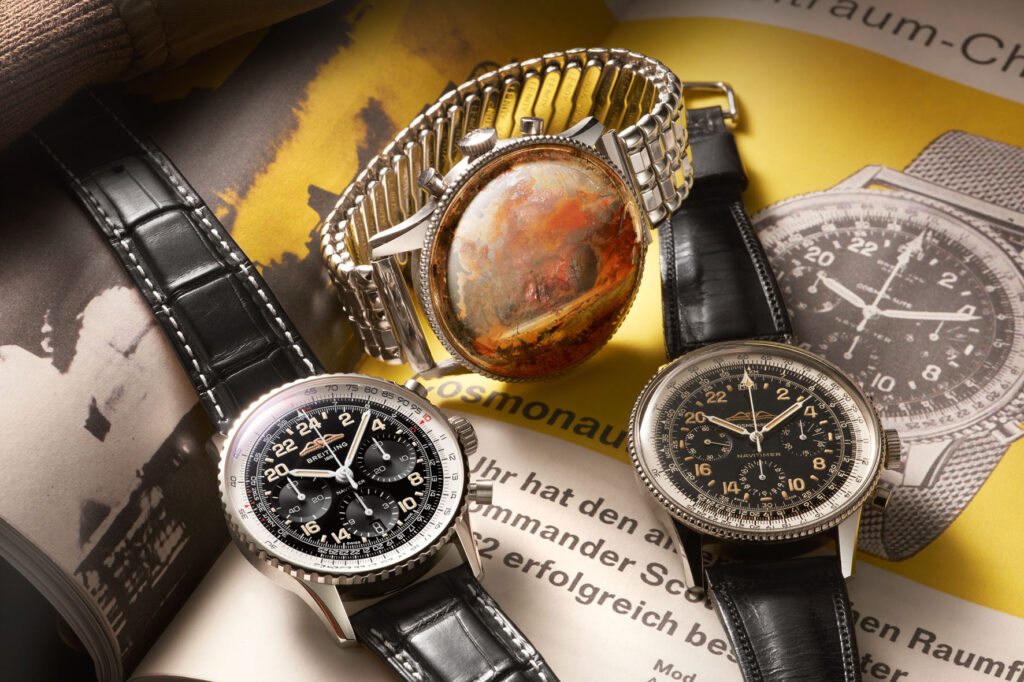
Watch Insanity was also among the few guests, thanks to the authority it gained with the brand and the entire market. A great satisfaction that we like to share with you by telling you about the new Breitling Navitimer Cosmonaute “live”.
In addition to Kern, former NASA astronaut Scott Kelly, members of Carpenter’s family, Gregory Breitling, and collector Fred Mandelbaum attended the event. The guests talked about the creation of the Cosmonaut and discussed the significance of Carpenter’s mission, and the particular relevance of both elements for the space program of the time.
THE COSMONAUTE IN HISTORY
It should be remembered that Breitling already produced versions of the Navitimer Cosmonaute in the past. Some references with the Lemania 1873 manual caliber and a 41 mm case, rather faithful to the original, belong to the 90s. One of them, in a 1000-piece limited edition, was dedicated to Carpenter, with a particular engraving on the back and featuring his name on the dial.
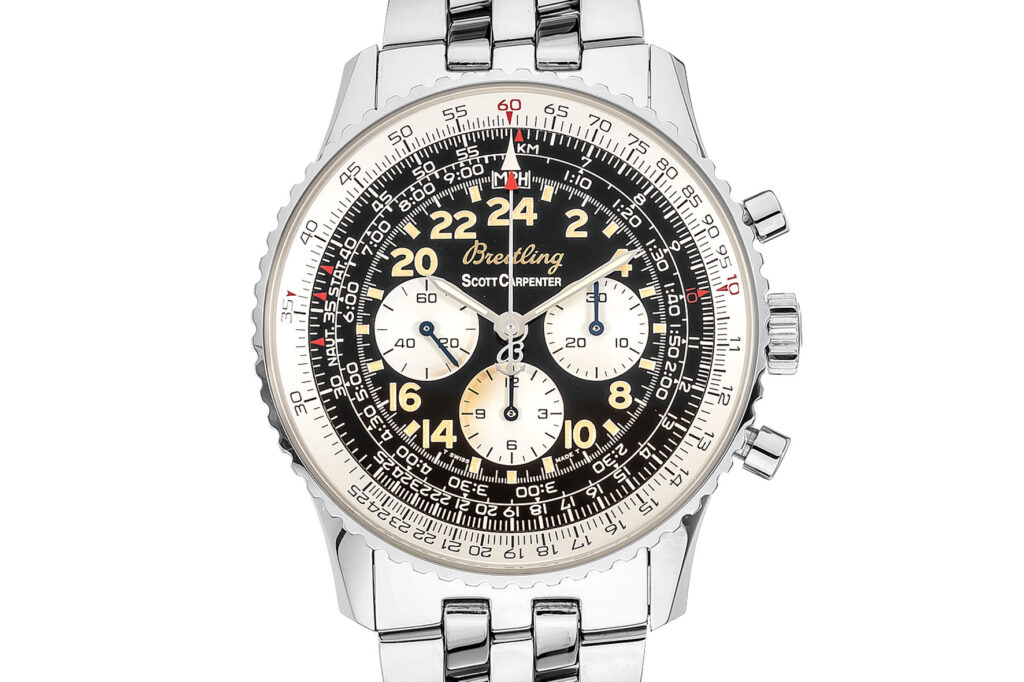
In 2012, 50 years after the Mercury-Atlas 7 mission, Breitling launched a limited edition in 1962 pieces with a 43 mm case and a Breitling Caliber 02 hand wound movement. The steel case back featured the engraving dedicated to the mission and a thermometric scale in Celsius and Fahrenheit.
THE NEW BREITLING NAVITIMER COSMONAUTE
The new reference is well-suited to the history of the Navitimer Cosmonaute, mainly due to the peculiarity of its dial, which allows you to read 24 hours instead of 12. On the rehaut there is the classic Navitimer slide rule, for mathematical calculations; its legibility is easy thanks to the chromatic contrast between the external rehaut, white, and the internal one, black.
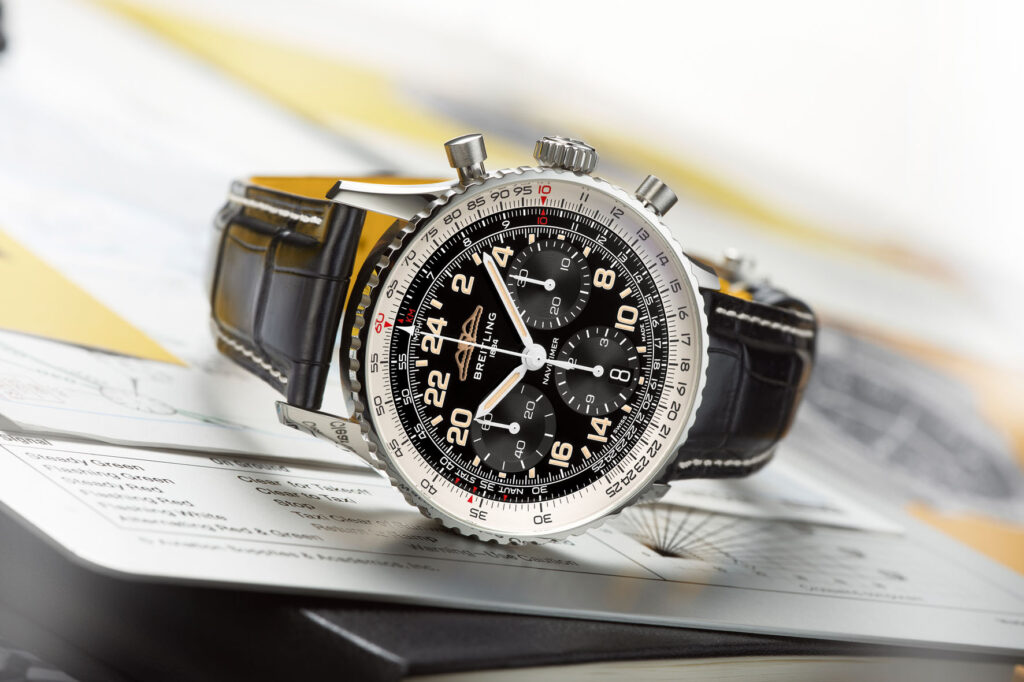
Black also characterizes the dial, as in the original 1962 edition. A deep black that is also found in the three chronograph counters, with a concentric-circle finishing. The date window is at 6 o’clock, unlike the 2012 version where it was placed at 4:30, crowding a dial already very crowded.
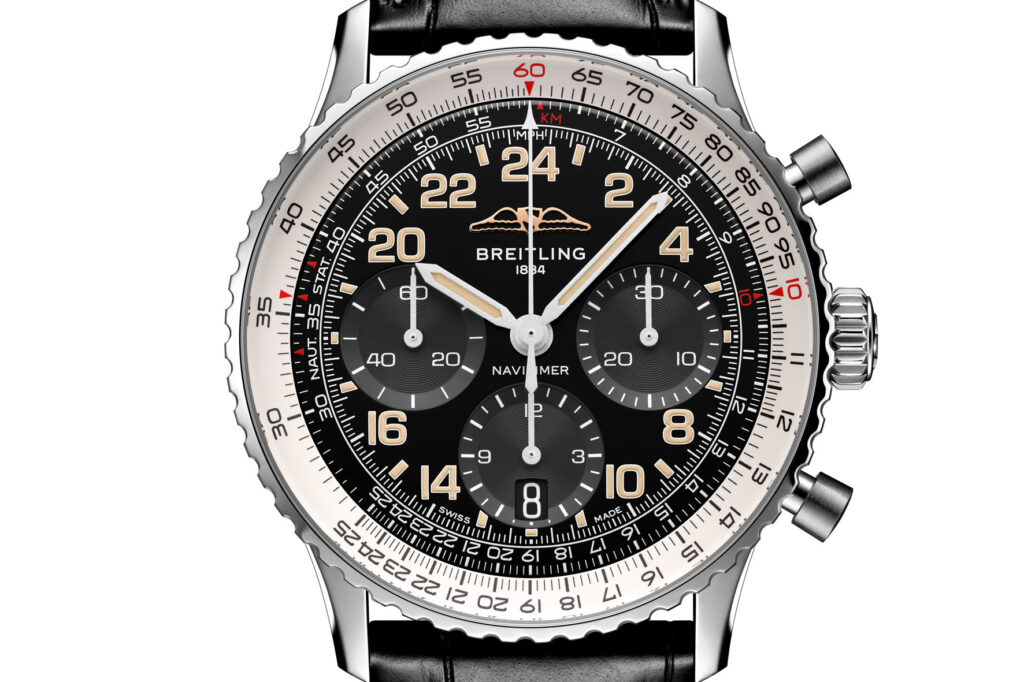
At 12 o’clock is the applied AOPA logo in gold, while the classic dagger hands and the full-bodied indexes are covered with Super-LumiNova. Even if you don’t fly into space, visibility in the dark is always appreciated. The bezel features the classic knurling, typical of the Breitling Navitimer, and is designed to make use easy even with aviator gloves; the size of the crown and the pump pushers of the chronograph have the same purpose. The bezel is in platinum, a precious detail.
THE CASE AND THE MOVEMENT
The case is in steel and has polished and satin finishes between the side and the lugs. Breitling has chosen an intermediate size, with a diameter of 41 mm, to make the watch more wearable, despite the thickness – 13 mm – and the very long lugs, typical of the Navitimer, which do not always get along with thin wrists. The watch is available with a seven-row steel bracelet (alternating shiny and satin) or a crocodile leather strap. The first costs 10,550 euros, the second 10,220.
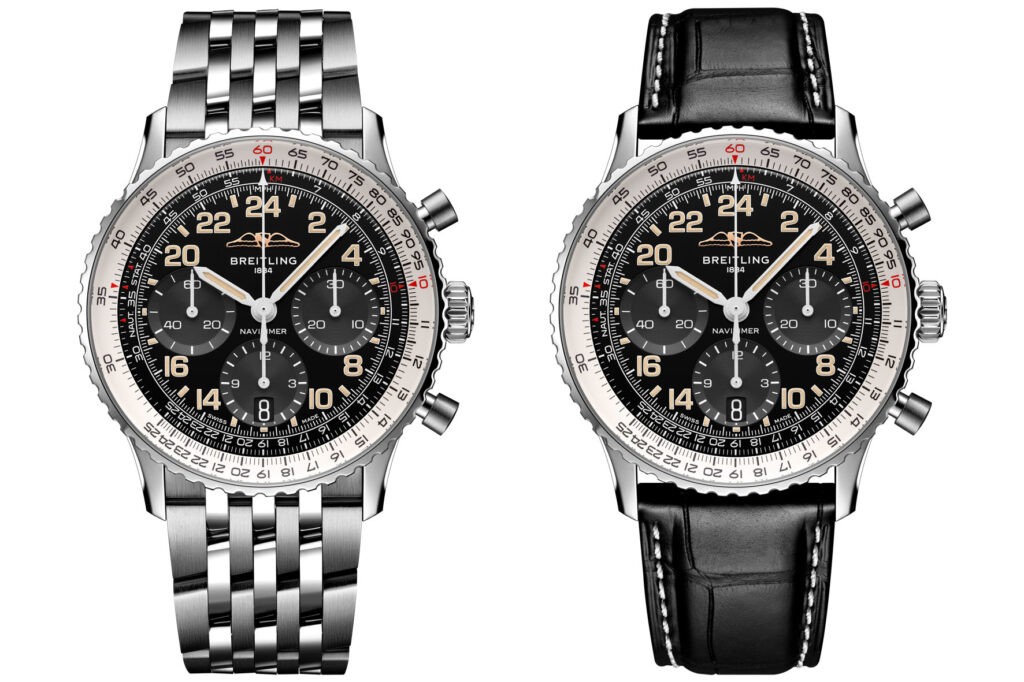
The caliber driving the Breitling Navitimer Cosmonaute is well known to enthusiasts. It is the Breitling B02 hand-wound in-house movement, derived from the B01 automatic but with the 24-hour indication. It beats at 28,800 vibrations / hour, has approximately 70 hours of power reserve and is COSC certified. It’s a column-wheel chronograph with vertical clutch.
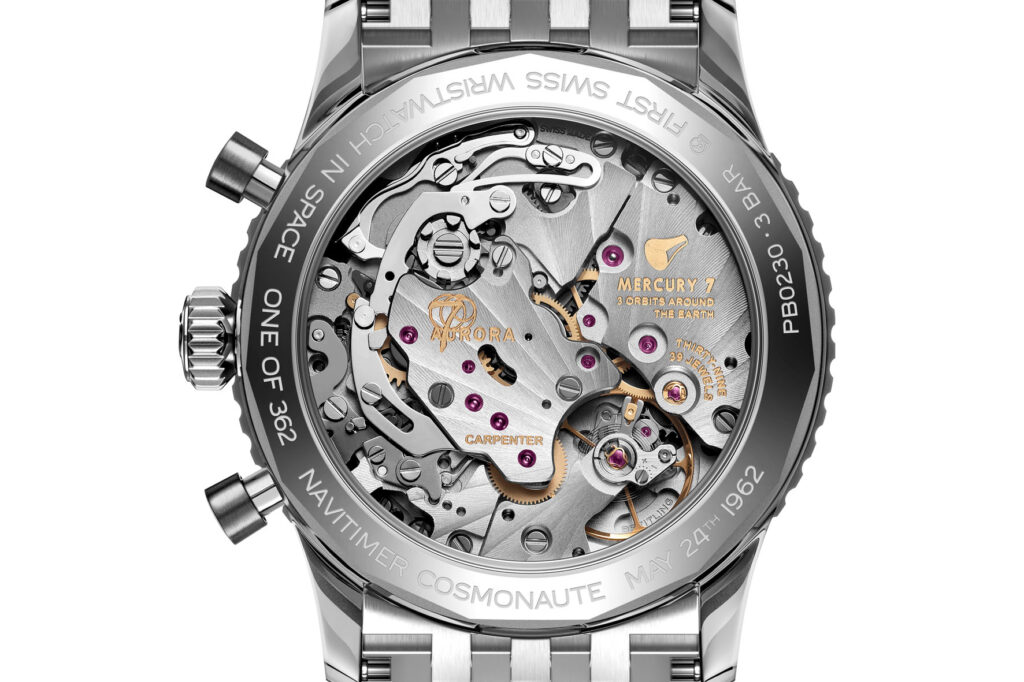
The movement is visible through the sapphire crystal case back. The bridges have a beautiful radial finish that originates from the balance wheel and radiates towards the periphery – or, if you prefer, leads the eye of the beholder from the periphery to its beating heart. In addition, it is embellished with some special engravings on the bridges to celebrate the anniversary: the words “Carpenter”, “Aurora 7” and “3 orbits around the Earth”, together with “Mercury 7”, the name of the group of seven designated Mercury astronauts, selected by NASA on April 9, 1959.
A MATTER OF RECORD
However, the case back has another interesting feature: the engravings. In addition to the reference number, the water resistance indication (3 bar), the number “ONE OF 362”, and the commemorative date of Carpenter’s mission, it bears the inscription “First Swiss Wristwatch In Space.”
Because this was the Breitling Navitimer Cosmonaute. If the distinction between “in space” and “on the Moon” is clear, some may recall that during his flight around the Earth in February 1962, mentioned above, John Glenn wore a Heuer 2915 A chronometer. But it was a pocket stopwatch, adapted for the occasion to be attached to the wrist with a strap.
A matter of details? No, a matter of historical precision, which for Breitling is as important as precision in keeping time. Otherwise, watches like the Navitimer Cosmonaute could never have been born or become myths that, sixty years after their launch, continue to fascinate generations of enthusiasts.
By Davide Passoni

